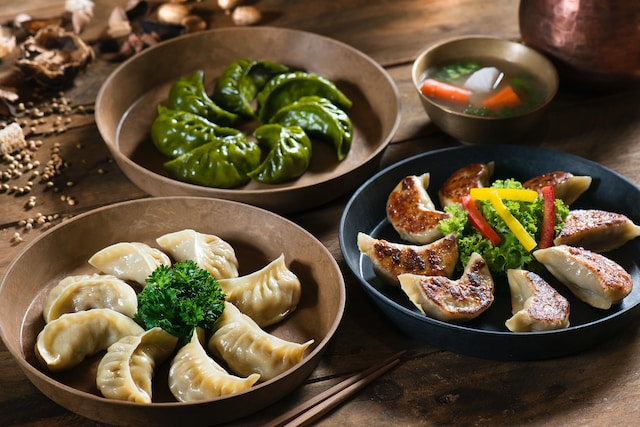
The world of Chinese cuisine is a tantalizing adventure for food enthusiasts. With its rich history, diverse regional flavors, and exquisite techniques, mastering the art of cooking authentic Chinese dishes at home can seem like a daunting task.
In this guide, we will explore the essence of Chinese cooking, demystify complex ingredients, and unveil the secrets behind classic dishes. From the bold and fiery Szechuan flavors to the delicate and nuanced flavors of Cantonese cuisine, you will acquire the knowledge and skills needed to create mouthwatering Chinese dishes that will impress your family and friends.
Whether you are a novice cook or an aspiring home chef, this guide will provide you with essential tips, techniques, and recipes that will bring the true spirit of Chinese gastronomy to your dining table.
Understanding the Essentials of Chinese Flavors
One of the key aspects of mastering authentic Chinese cuisine lies in understanding the balance and harmony of flavors that make each dish come alive. Chinese cooking is known for its emphasis on the “five flavors” – salty, sweet, sour, bitter, and umami.
Salty
Salty flavors are essential in Chinese cooking as they enhance the taste of other ingredients and add depth to a dish. Common sources of saltiness include soy sauce, fermented black beans, and dried shrimp. These ingredients are often used as seasoning agents and can be found in various traditional recipes such as Kung Pao Chicken and Mapo Tofu.
Sweet
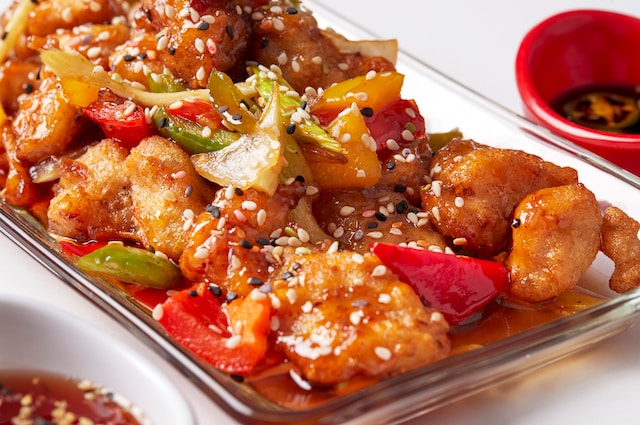
The sweetness in Chinese cuisine is not overpowering but rather delicately balanced to provide a pleasant contrast to other flavors. Ingredients like honey, sugar, and hoisin sauce are commonly used to achieve this balance.
Be mindful of not adding too much sweetness as it can overpower the other flavors in a dish.
Sour
Sour flavors play a significant role in many Chinese dishes, providing a refreshing and tangy taste. Vinegar, citrus fruits like lemons and oranges, and pickled vegetables are popular sources of sourness. For example, the iconic dish, Sweet and Sour Pork, combines the sweetness of pineapple with the tanginess of vinegar to create a harmonious flavor profile.
Bitter
Bitterness is less prominent in Chinese cuisine but is still present in certain dishes, such as bitter melon stir-fries or bitter greens. Bitter ingredients like bitter gourd or Chinese herbal medicines are believed to have health benefits and are often used in traditional Chinese cooking to balance out other flavors.
Umami
Umami, often referred to as the “fifth taste,” is a savory and rich flavor that adds depth and complexity to dishes. Ingredients such as fermented soybean paste, dried mushrooms, and oyster sauce are rich in umami. These ingredients are used in many Chinese recipes to create a savory and satisfying experience for the palate.
The Chinese Pantry
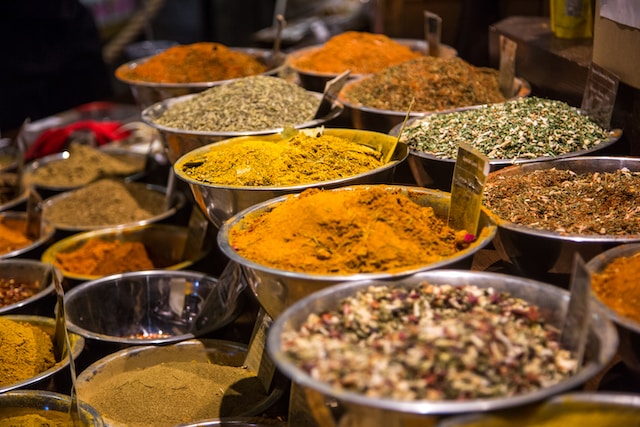
Building a well-stocked Chinese pantry is the foundation for creating authentic and delicious Chinese dishes at home. By having a selection of essential ingredients at hand, you’ll be ready to embark on your culinary journey with confidence.
Staple Ingredients
- Rice: Rice is a staple food in China and a key component of many Chinese meals. Stock up on both white and jasmine rice to accommodate different dishes.
- Noodles: Chinese cuisine boasts a wide variety of noodles, from thin rice noodles to chewy wheat noodles. Keep a stock of your favorites, such as lo mein or egg noodles, to use in stir-fries or soups.
- Tofu: Tofu, made from soybeans, is a versatile ingredient commonly used in vegetarian and vegan Chinese dishes. Keep extra-firm and silken tofu on hand to add texture and protein to your meals.
- Soy Sauce: Soy sauce is the backbone of Chinese cuisine and adds depth and umami to dishes. Opt for both light and dark soy sauce for different purposes. Light soy sauce is saltier and used for seasoning, while dark soy sauce is thicker, sweeter, and often used for color and flavor.
- Vinegar: Chinese cuisine relies on various types of vinegar to add acidity and depth to dishes. Rice vinegar, black vinegar, and Chinkiang vinegar are commonly used. Rice vinegar is mild and sweet, while black vinegar has a rich, smoky flavor.
Essential Condiments:
- Oyster Sauce: Oyster sauce is a savory and thick condiment made from oyster extracts. It adds depth and richness to stir-fries and marinades.
- Hoisin Sauce: Hoisin sauce is a sweet and savory condiment made from soybeans, garlic, and various spices. It’s commonly used in Peking duck and as a dip for spring rolls.
- Sesame Oil: Sesame oil is a fragrant and flavorful oil used as a finishing touch in many Chinese dishes. A small drizzle can add an aromatic nuttiness to stir-fries and noodle dishes.
- Sichuan Peppercorns: Sichuan peppercorns are a signature spice in Szechuan cuisine, known for their unique numbing and citrusy flavor. They are a must-have for creating authentic Szechuan dishes.
- Dried Mushrooms: Dried mushrooms, such as shiitake or wood ear mushrooms, are used to add a meaty texture and earthy flavor to stir-fries, soups, and dumplings.
Tools of the Trade
A well-equipped kitchen is essential for recreating the authentic Chinese cooking experience at home. From woks to cleavers, the right tools can make a significant difference in the outcome of your dishes. In this section, we will explore the essential tools every aspiring Chinese home chef should have in their culinary arsenal.
- Wok: The wok is the heart and soul of Chinese cooking. Its unique shape allows for even heat distribution and quick cooking. Look for a wok made of carbon steel, as it conducts heat efficiently, providing that signature smoky flavor and irresistible sear to your stir-fried dishes. Season your wok before using it to create a natural nonstick surface and enhance its durability.
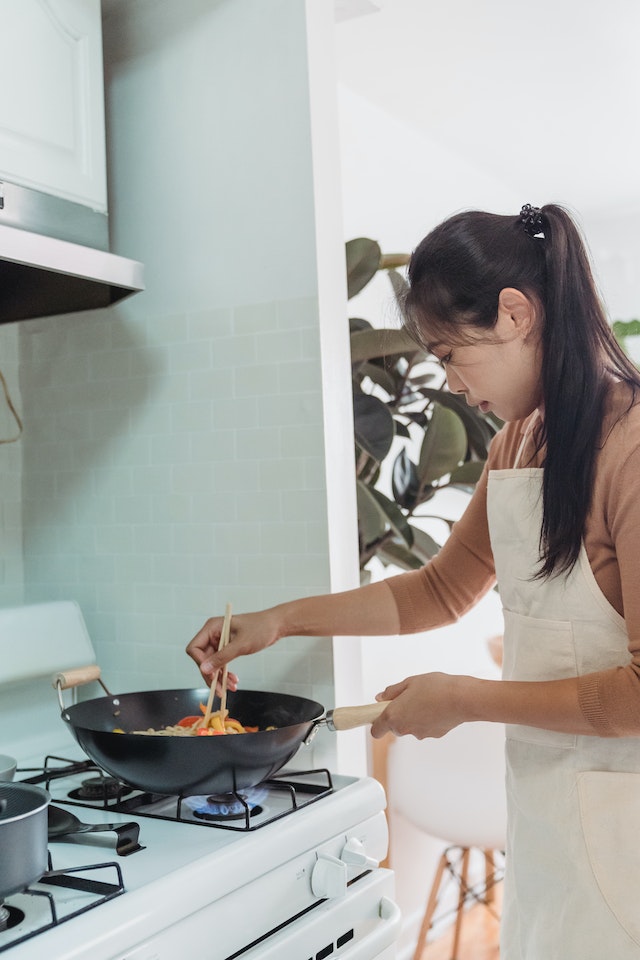
- Cleaver: A Chinese cleaver, also known as a chef’s knife, is a versatile tool that can be used for slicing, dicing, and mincing ingredients with precision. Its wide blade allows for easy scooping and transferring of ingredients from the cutting board to the wok. Invest in a high-quality cleaver with a sharp edge and a comfortable handle for optimal control.
- Bamboo Steamer: Steaming is a classic Chinese cooking method that preserves the natural flavors and textures of ingredients. A bamboo steamer is an essential tool for preparing steamed buns, dumplings, and seafood. Line the steamer with parchment or cabbage leaves to prevent sticking, and place it over a pot of boiling water for gentle and even cooking.
- Spider Strainer: A spider strainer, or a skimmer, is a crucial tool for safely retrieving and draining ingredients from hot liquids. Its long handle and wide, flat basket make it perfect for skimming noodles, blanching vegetables, and retrieving dumplings from boiling water. Look for a spider strainer made of stainless steel for durability and easy cleaning.
- Mortar and Pestle: Many Chinese dishes rely on freshly ground spices and pastes for maximum flavor. A mortar and pestle allows you to crush garlic, ginger, and spices to release their aromas and infuse your dishes with irresistible fragrances. Opt for a sturdy mortar and pestle made of granite or porcelain to withstand the grind.
- Steaming Racks and Inserts: If you plan on exploring more steamed dishes, invest in additional steaming racks and inserts to maximize your cooking capacity. Stack these inserts in your wok to steam multiple dishes simultaneously, saving time and energy.
- Wire Strainer: A wire strainer, also known as a sieve, is a versatile tool for sifting dry ingredients, rinsing vegetables, and draining noodles. Choose a wire strainer with a sturdy frame and fine mesh to ensure efficient straining without losing small ingredients.
- Chopsticks and Chinese Soup Spoon: Embrace the authentic Chinese dining experience with a pair of chopsticks and a Chinese soup spoon. Practice your chopstick skills and scoop up every last morsel of your flavorful broths and soups with the traditional spoon.
- Kitchen Shears: A good pair of kitchen shears is indispensable in Chinese cooking. Use them to trim excess fat from meat, snip herbs, or cut through shells of shrimp and crab. Look for shears with stainless steel blades and a comfortable grip for ease of use.
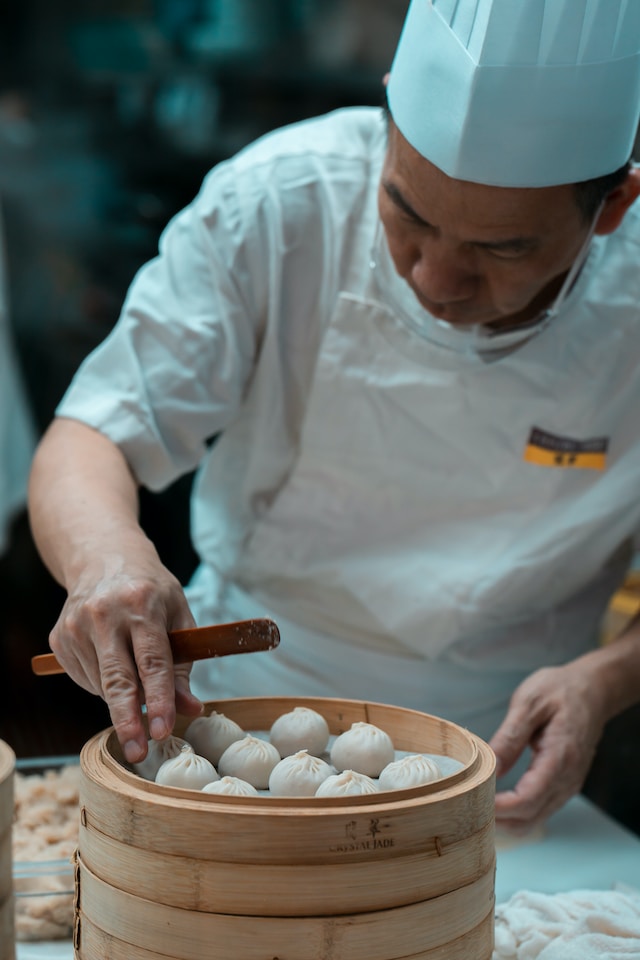
- Bamboo Cooking Utensils: Bamboo utensils, such as a spatula and a pair of chopsticks, are gentle on your wok’s surface and prevent scratching. They are perfect for flipping, stirring, and tossing ingredients while maintaining the integrity of delicate textures. Bamboo utensils are also heat-resistant and comfortable to handle.
Decoding Cooking Techniques
Chinese cuisine is renowned for its intricate cooking techniques that bring out the unique flavors and textures of each dish. Understanding these techniques is crucial for mastering the art of authentic Chinese cooking. In this section, we will delve into the key cooking techniques used in Chinese cuisine, providing you with the knowledge and skills to create restaurant-quality dishes in your very own kitchen.
Stir-Frying
Stir-frying is perhaps one of the most iconic Chinese cooking techniques. It involves quickly cooking bite-sized ingredients over high heat in a wok, with constant stirring and tossing. This technique ensures that the ingredients cook evenly and retain their vibrant colors, while preserving their natural flavors and textures. The high heat also imparts a smoky flavor known as “wok hei,” which adds depth and complexity to the dish. To stir-fry like a pro, ensure that your wok is preheated and that you have all your ingredients prepared and ready before you start cooking.
Steaming
Steaming is a delicate yet flavorful cooking technique that is widely used in Chinese cuisine. It helps to retain the natural flavors, colors, and nutrients of ingredients, making it a healthier option. To steam food, you will need a steaming basket or a bamboo steamer. Simply place the ingredients in the steamer, and steam them over boiling water until they are cooked to perfection. To enhance the flavors, you can season the dish with soy sauce, ginger, or garlic before steaming.
Boiling and Blanching
Boiling and blanching techniques are commonly used to prepare ingredients for Chinese dishes. Boiling involves cooking ingredients in a large pot of boiling water until they are fully cooked. This technique is often used for noodles, dumplings, and leafy greens. Blanching, on the other hand, involves briefly immersing the ingredients in boiling water and then immediately transferring them to ice water to stop the cooking process. Blanching helps to maintain the vibrant colors of vegetables, removes any bitterness, and enhances their crispness.
Braising
Braising is a slow-cooking technique that involves simmering ingredients in a flavorful liquid over low heat for an extended period. This technique helps to tenderize tough cuts of meat and infuse them with rich flavors. To braise successfully, choose a heavy-bottomed pot with a tight-fitting lid to ensure even heat distribution and retain moisture. Add aromatic spices, soy sauce, and other seasonings to create a robust and savory sauce that coats the ingredients as they cook.
Deep-Frying
Deep-frying is a cooking technique that adds a crispy texture to ingredients. It involves submerging the food in hot oil until it turns golden brown and develops a crunchy exterior. While deep-frying, it is essential to heat the oil to the correct temperature to ensure that the food cooks evenly and absorbs minimal oil. To achieve a light and crispy result, lightly coat the food in cornstarch or batter before frying. Make sure to drain the excess oil by placing the fried food on paper towels.

Red-Cooking
Red-cooking, also known as Hongshao, is a traditional Chinese cooking technique that involves simmering ingredients in a soy sauce-based liquid until they turn a deep reddish-brown color. This technique imparts a rich, caramelized flavor and a tantalizing aroma to the dish. Red-cooking is commonly used for pork belly and other meats, but it can also be applied to vegetables and tofu. To achieve the desired result, use dark soy sauce, sugar, and aromatic spices such as star anise, cinnamon, and ginger.
Grilling and BBQ
Grilling and BBQ techniques are not as prevalent in traditional Chinese cuisine, but they have become increasingly popular in recent years. These techniques add smoky flavors and unique charred notes to the food. For grilling, marinate the ingredients beforehand to tenderize and enhance their flavors. BBQ techniques involve slow-cooking the food over a low fire, allowing it to absorb the smokiness and develop a crispy exterior.
By mastering these essential Chinese cooking techniques, you will be able to recreate the authentic flavors and textures of Chinese cuisine in the comfort of your own home. Experiment with different ingredients, flavors, and combinations to create your own signature dishes that capture the essence of Chinese gastronomy.
